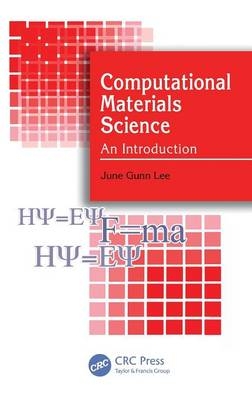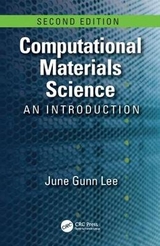
Computational Materials Science
Crc Press Inc (Verlag)
978-1-4398-3616-3 (ISBN)
- Titel erscheint in neuer Auflage
- Artikel merken
After a general overview of computational science, the text introduces MD methods based on classical mechanics and covers their implementation with run examples of XMD and LAMMPS. The author discusses first-principles methods based on quantum mechanics at an introductory level, using illustrations and analogies to assist students in understanding this difficult subject. The book then describes the density functional theory (DFT)—the first-principles method that can handle materials practically. It also reveals how each orbital of electron leads to particular properties of solids, such as total energy, band structure, and barrier energy. The final chapter implements the DFT into actual calculations with various run examples via the VASP program.
Computational methods are contributing more than ever to the development of advanced materials and new applications. For students and newcomers to computational science, this text shows how computational science can be used as a tool for solving materials problems. Further reading sections provide students with more advanced references.
June Gunn Lee is an emeritus research fellow in the Computational Science Center at the Korea Institute of Science and Technology, where he has worked for 28 years. He has published roughly 70 papers on engineering ceramics and computational materials science. He earned a Ph.D. in materials science and engineering from the University of Utah.
Introduction
Computational materials science
Methods in computational materials science
Computers
Molecular Dynamics
Introduction
Potentials
Solutions for Newton’s equations of motion
Initialization
Integration/equilibration
Data production
MD Exercises with XMD and LAMMPS
Potential curve of Al
Melting of Ni cluster
Sintering of Ni nanoparticles
Speed distribution of Ar gas: A computer experiment
SiC deposition on Si(001)
Yield mechanism of Au nanowire
Nanodroplet of water wrapped by graphene nanoribbon
First-Principles Methods
Quantum mechanics: The beginning
Schrödinger’s wave equation
Early first-principles calculations
Density Functional Theory
Introduction
Kohn–Sham approach
Kohn–Sham equations
Exchange-correlation functional
Solving Kohn–Sham equations
DFT extensions and limitations
Treating Solids
Pseudopotential approach
Reducing the calculation size
Bloch theorem
Plane-wave expansions
Some practical topics
Practical algorithms for DFT runs
DFT Exercises with VASP
VASP
Pt-atom
Pt-FCC
Convergence tests
Pt-bulk
Pt(111)-surface
Nudged elastic band method
Pt(111)-catalyst
Band structure of silicon
Phonon calculation for silicon
Appendix 1: List of symbols and abbreviations
Appendix 2: Linux basic commands
Appendix 3: Convenient scripts
Appendix 4: The Greek alphabet
Appendix 5: SI prefixes
Appendix 6: Atomic units
Index
References appear at the end of each chapter.
| Erscheint lt. Verlag | 28.10.2011 |
|---|---|
| Zusatzinfo | N/A; 238; 9 Tables, black and white; 97 Illustrations, black and white |
| Verlagsort | Bosa Roca |
| Sprache | englisch |
| Maße | 156 x 235 mm |
| Gewicht | 558 g |
| Themenwelt | Mathematik / Informatik ► Mathematik ► Algebra |
| Mathematik / Informatik ► Mathematik ► Angewandte Mathematik | |
| Naturwissenschaften ► Chemie ► Physikalische Chemie | |
| Technik ► Maschinenbau | |
| Technik ► Umwelttechnik / Biotechnologie | |
| ISBN-10 | 1-4398-3616-7 / 1439836167 |
| ISBN-13 | 978-1-4398-3616-3 / 9781439836163 |
| Zustand | Neuware |
| Haben Sie eine Frage zum Produkt? |
aus dem Bereich



